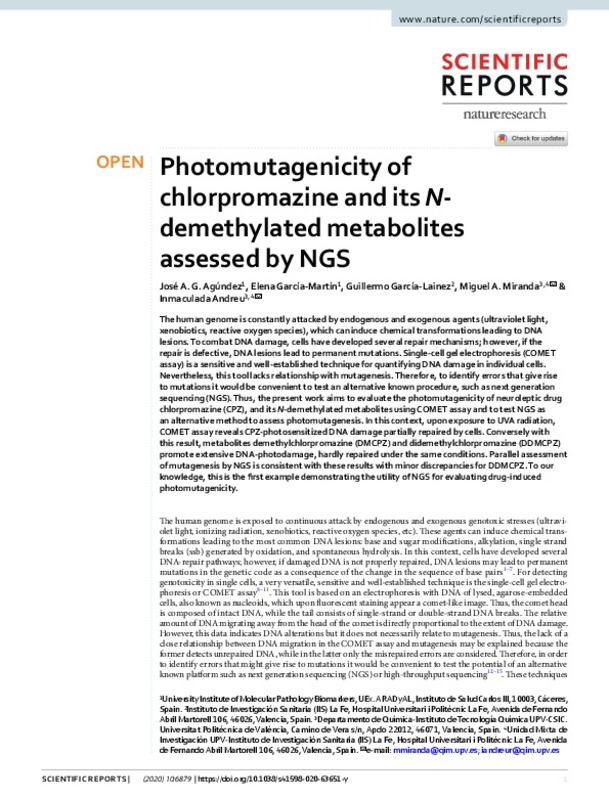JavaScript is disabled for your browser. Some features of this site may not work without it.
Buscar en RiuNet
Listar
Mi cuenta
Estadísticas
Ayuda RiuNet
Admin. UPV
Photomutagenicity of chlorpromazine and its N-demethylated metabolites assessed by NGS
Mostrar el registro completo del ítem
Agúndez, JA.; García-Martín, E.; Garcia-Lainez, G.; Miranda Alonso, MÁ.; Andreu Ros, MI. (2020). Photomutagenicity of chlorpromazine and its N-demethylated metabolites assessed by NGS. Scientific Reports. 10(1):1-6. https://doi.org/10.1038/s41598-020-63651-y
Por favor, use este identificador para citar o enlazar este ítem: http://hdl.handle.net/10251/176239
Ficheros en el ítem
Metadatos del ítem
| Título: | Photomutagenicity of chlorpromazine and its N-demethylated metabolites assessed by NGS | |
| Autor: | Agúndez, Jose A.G. García-Martín, Elena Garcia-Lainez, Guillermo | |
| Entidad UPV: |
|
|
| Fecha difusión: |
|
|
| Resumen: |
[EN] The human genome is constantly attacked by endogenous and exogenous agents (ultraviolet light, xenobiotics, reactive oxygen species), which can induce chemical transformations leading to DNA lesions. To combat DNA ...[+]
|
|
| Derechos de uso: | Reconocimiento (by) | |
| Fuente: |
|
|
| DOI: |
|
|
| Editorial: |
|
|
| Versión del editor: | https://doi.org/10.1038/s41598-020-63651-y | |
| Código del Proyecto: |
...[+] |
|
| Agradecimientos: |
This study was funded by the Carlos III Institute (ISCIII) of Health (Grants: PI15/00303, PI18/00540, PI16/01877, CPII16/00052, the Thematic Networks and Co-operative Research Centres: ARADyAL RD16/0006/0004 and RD16/0006/0030), ...[+]
|
|
| Tipo: |
|









